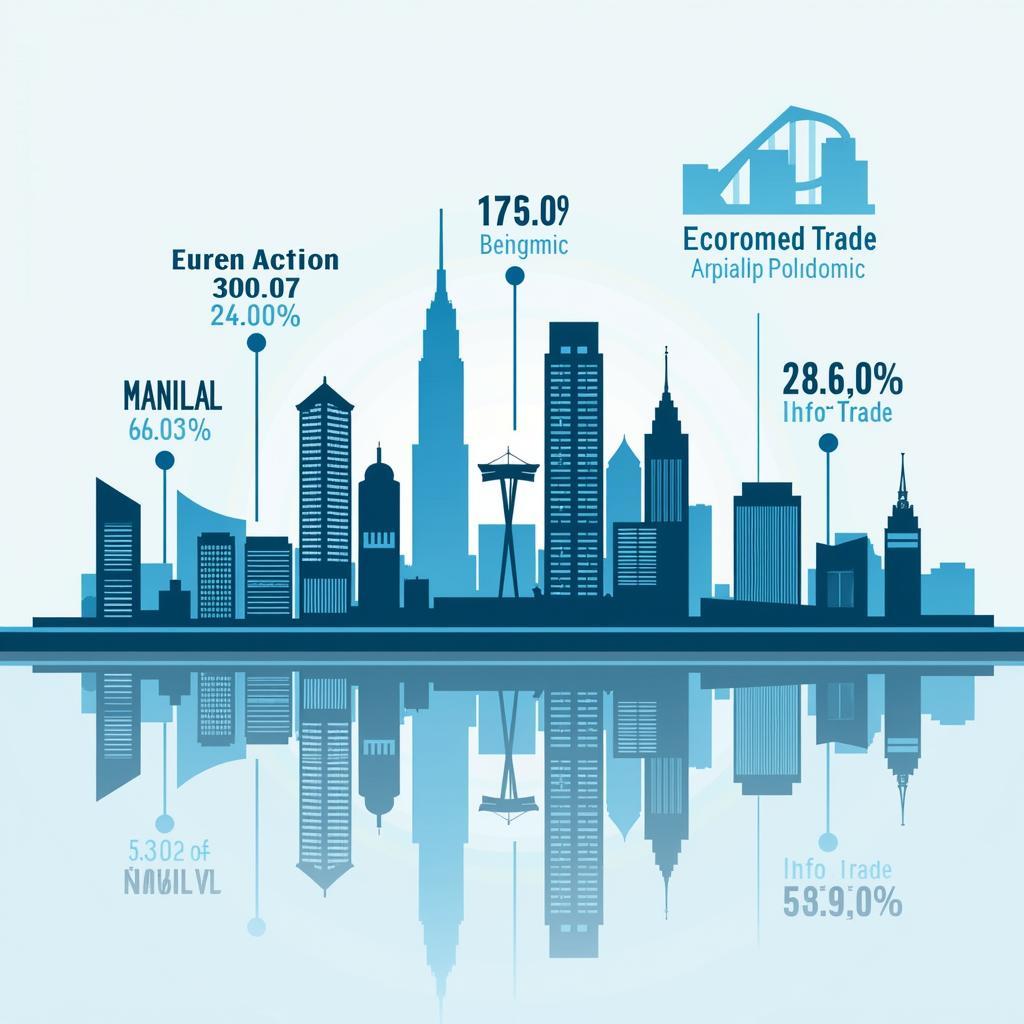The Asean 5 Region, comprising Indonesia, Malaysia, the Philippines, Singapore, and Thailand, represents the core of Southeast Asia’s economic and political dynamism. These nations, the founding members of ASEAN, have played a crucial role in shaping the region’s trajectory and continue to drive its growth and integration. This article delves into the significance of the ASEAN 5, exploring their individual strengths, collective impact, and the future prospects of this vital sub-region.
Understanding the Importance of the ASEAN 5
The ASEAN 5 nations laid the groundwork for what ASEAN is today. Their combined economic power, strategic location, and diverse cultural heritage make them a focal point for global trade, investment, and cultural exchange. The formation of the ASEAN Economic Community (AEC) has further enhanced their integration, facilitating the free flow of goods, services, investments, skilled labor, and capital. These countries have worked together to address regional challenges, including security, environmental sustainability, and socio-economic development. The ASEAN 5’s commitment to cooperation and integration has been instrumental in maintaining peace and stability in the region.
 ASEAN 5 Economic Powerhouse
ASEAN 5 Economic Powerhouse
Economic Powerhouse: Driving Growth in Southeast Asia
The ASEAN 5’s economic performance has been remarkable. They account for a significant portion of ASEAN’s total GDP and attract a large share of foreign direct investment. Indonesia, the largest economy in Southeast Asia, plays a crucial role in driving regional growth. Malaysia, with its strong manufacturing and services sectors, is a key player in global supply chains. The Philippines, with a young and dynamic population, is a rising economic star. Singapore, a global financial hub, provides critical services and connectivity for the region. Thailand, known for its manufacturing and tourism industries, continues to be a vital economic engine.
 ASEAN 5 Cultural Diversity
ASEAN 5 Cultural Diversity
The ASEAN APEC Summit 2015 highlighted the growing economic influence of the ASEAN 5. The summit brought together world leaders to discuss key global issues, including trade, investment, and economic cooperation.
Cultural Hub: A Tapestry of Traditions
The ASEAN 5 region is a melting pot of cultures. From the ancient temples of Indonesia to the bustling streets of Singapore, the region offers a rich tapestry of traditions. This cultural diversity is a major draw for tourists and contributes to the region’s vibrant identity. The ASEAN 5 nations are committed to preserving their cultural heritage while embracing modernization. They recognize the importance of cultural exchange in fostering understanding and cooperation within the region and with the rest of the world.
What are the key economic sectors in the ASEAN 5?
The key economic sectors in the ASEAN 5 are diverse, ranging from manufacturing and tourism in countries like Thailand and Malaysia to the financial services hub of Singapore. Indonesia’s vast natural resources also play a crucial role in its economy.
How does the ASEAN 5 contribute to regional stability?
The ASEAN 5’s commitment to cooperation and dialogue has been instrumental in maintaining regional stability. Their collective efforts in addressing common challenges, such as security and environmental issues, strengthen the overall ASEAN framework.
What is the future of the ASEAN 5?
The future of the ASEAN 5 is bright. As the region continues to integrate and develop, the ASEAN 5 will play an increasingly important role in shaping the global landscape. Continued cooperation and innovation will be key to their continued success. The 5th ASEAN Ministerial Meeting on Drug Matters represents one example of the continuing efforts to address important regional issues.
 ASEAN 5 Future Growth
ASEAN 5 Future Growth
Dr. Maria Santos, a leading economist specializing in Southeast Asian markets, states, “The ASEAN 5 are well-positioned for continued growth, given their strategic location, diverse economies, and commitment to regional integration.” Another expert, Mr. Lee Kuan Yew, a prominent political analyst, adds, “The ASEAN 5’s collective strength lies in their ability to collaborate and address common challenges effectively.” Finally, Professor Anita Sharma, a cultural historian, observes, “The rich cultural heritage of the ASEAN 5 is a valuable asset that can further enhance their global standing.”
The ASE REI Graduare 2015 and the 51st ASEAN Ministerial Meeting 2018 further demonstrate the commitment of the ASEAN 5 to regional cooperation and development. The ASEAN 2015 Malaysia also played a significant role in promoting regional integration.
Conclusion
The ASEAN 5 region stands as a testament to the power of cooperation and integration. These nations have achieved remarkable economic growth, preserved their rich cultural heritage, and contributed significantly to regional stability. The ASEAN 5’s continued commitment to collaboration and innovation promises a bright future for this dynamic sub-region, making it a key player in the global arena.
FAQ
- Which countries make up the ASEAN 5? (Indonesia, Malaysia, Philippines, Singapore, Thailand)
- What is the significance of the ASEAN 5? (Founding members, economic powerhouses, drivers of regional integration)
- How does the ASEAN 5 contribute to ASEAN’s overall economic growth? (Significant portion of ASEAN’s GDP, attractive to FDI)
- What are some of the key challenges facing the ASEAN 5? (Maintaining sustainable growth, addressing inequality)
- How does the ASEAN 5 promote cultural exchange? (Numerous cultural festivals, tourism initiatives, educational programs)
- What are some examples of ASEAN 5 cooperation? (Joint infrastructure projects, economic agreements)
- What is the future outlook for the ASEAN 5? (Continued growth, increasing global influence)
Need further assistance? Please contact us:
Phone: 0369020373
Email: [email protected]
Address: Thon Ngoc Lien, Hiep Hoa, Bac Giang, Vietnam
Our customer service team is available 24/7.

